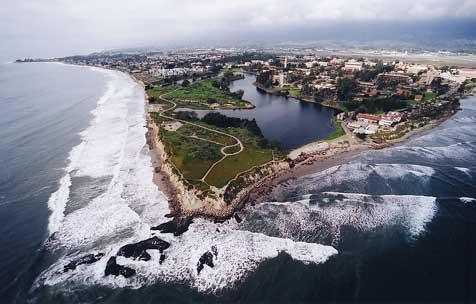2013 Marks Most Selective Year in UCSB History
Falling Admission Rate Reflects Rising Prestige and Popularity

Maybe you’ve heard. Maybe you’ve even crunched some numbers yourself. UC Santa Barbara just recorded its most selective admissions year in school history. This winter, 62,416 high school seniors applied to UCSB, the largest number of applicants the college has ever seen. Out of these applicants, 24,248 were offered a place in the fall 2013 class.
At 39 percent, the 2013 admission rate contrasts sharply to 49 percent in 2005. This increase in selectivity can be attributed to two major factors, according to Christine Van Gieson, UCSB’s Director of Admissions. “Until the mid-90s, UCSB admitted most of the eligible freshmen who applied,” said Van Gieson. Over the years, however, the school has seen an surge in the number of well-qualified applicants, and it has become recognized for its attractive location, Van Gieson pointed out.
The UC system as a whole experienced a drastic increase in applicants between 2005 and 2013. In 2005, the nine undergraduate UC campuses received 76,132 applications. This year that number reached 139,758, marking an 80 percent increase. During that time, UCSB saw a 67 percent increase in applications.
UCSB’s 2013 admission rate is also significantly smaller than just two years ago, falling seven percent from 46 percent in 2011. All UC campuses have intensified their standards for admission in the last two years, said Van Gieson, with similar admission rates for UCSB, UCSD, UCD, and UCI this year. Historically, UCB and UCLA have been the most selective.
According to its admissions website, the UC Santa Barbara student population is 21,685, with over 18,000 undergraduates. Ninety percent of the student population are California residents. Though UCSB has recently seen a sizable increase in domestic and international nonresident applications, Van Gieson explained that the percentage of nonresidents admitted over the past two years has remained at 20 percent.
The large proportion of California residents who enrolled at UCSB reflects the tendency of out-of-state applicants to decline admission to the UC system. Fewer than 10 percent of 2013 UC undergraduates will be non-California residents, according to the UC Office of the President.
UC Santa Barbara ranks among the top two of UC campuses in the number of applicants from underrepresented minority groups. Van Gieson explained that 30 percent of those admitted to UCSB’s 2013 class are in minority groups. Of the acceptances for California residents, 5,197, or 27 percent, are from minority groups.
Van Gieson went on to say that Chancellor Henry T. Yang, in his efforts to recruit top-notch faculty and to engage with admitted freshmen, is dedicated to improving the reputation of UCSB. Many high school seniors recognize the quality of a UCSB education, said Van Gieson. She also pointed out that the UCSB community is supportive and welcoming to students of all backgrounds. “Of all UC graduates in a recent survey, UCSB students indicated the highest satisfaction level,” Van Gieson commented.
UCSB also continues to rise in the rankings. According to a quantitative analysis conducted by the Centre for Science and Technology Studies at Leiden University in the Netherlands, UCSB ranked second in an annual ranking of the top 500 major world universities in terms of impact in the sciences.



